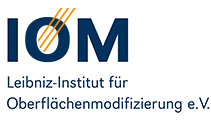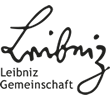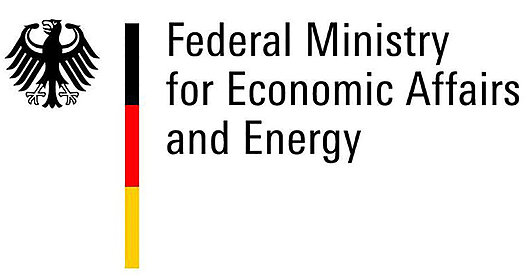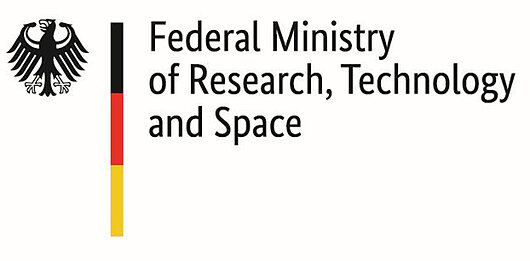Selected Projects
Here you will find an overview of selected larger collaborative projects with IOM participation as well as projects coordinated by IOM, funded by various funding agencies.
Universal diagnostic platform for reactive ion beam processes
Ion beam-based ablation processes using inert ions for shaping, structuring and smoothing surfaces have experienced an enormous upswing in recent years and are now established key technologies, e.g. in high-end optics manufacturing. Reactive ion beam etching (RIBE) processes in particular are becoming increasingly important. Here, in addition to the purely physical process of atomization, chemical reactions between the surface and the reactive ion (or radical) are also exploited, creating additional degrees of freedom for defined material removal. However, the basic prerequisite is that the constantly increasing accuracy requirements in this high-tech sector (shape accuracy, roughness, process stability and control) can be met. Of central importance here are highly developed and process-adapted ion sources suitable for reactive gas, which must meet certain requirements in terms of stability, process-adapted beam composition, maintenance times, etc. Due to the application-specific necessity, the development and optimization of process-adapted broad-beam ion sources will be increasingly pursued in the future.
A prerequisite for such technological developments is a sophisticated diagnostic platform for the characterization of reactive ion beam processes. With the establishment of the new universal diagnostics platform, the R&D infrastructure in the field of development and application of broad beam ion sources is to be sustainably strengthened and secured, process fundamentals and new applications are to be developed and a basis for the transfer of the expected technological results into industrial use is to be created.
Duration: 2019 – 2021
Funding: 1.189.584,00 Euro
Funding programme: Sächsische Aufbaubank (SAB)Contact:
Dr. Frank Frost
Field of Research Ultra-precision Surfaces
Phone: 49 (0)341 235-3309
E-Mail: frank.frost(at)iom-leipzig.deDr. Daniel Spemann
Cross-section Unit Tool Development
Phone: 49 (0)341 235-2681
E-Mail: daniel.spemann(at)iom-leipzig.deModular research platform for plasma-based thin film deposition techniques
IOM provides a new and unique tool to modify surfaces and synthesize new functional materials and thin films by applying different physical and chemical non-equilibrium processes. The platform is flexible and modular in design in order to be applicable to different material systems in the long term and to be able to react to research needs that emerge through new developments in fundamentals and applications. First tests with the platform will be carried out on material systems from the fields of switchable layers at low temperatures (controllable surface physics) and energy conversion and storage (electrochemically active surfaces).
Duration: 2019-2021
Funding: 988.248,00 Euro
Funding programme: Sächsische Aufbaubank (SAB)Contact:
Prof. Dr. André Anders
Leibniz Institute of Surface Engineering (IOM)
Director IOM
Phone: 49 (0)341 235-2308
E-Mail: andre.anders(at)iom-leipzig.dePlasma-based deposition of tailored functional surfaces
The aim of the project is to synthesize novel two- and three-dimensional nanomaterial systems on surfaces using a modular research platform. New pulsed plasma processes will be used for this purpose. By simultaneously measuring and controlling the properties of pulsed plasmas and growing thin films or nanocomposites, synthesis parameters are tested, adjusted and exploited to provide new tailored material systems for various applications. In particular, two material systems are investigated: (1) Switchable oxide layers, especially those which switch their electrical properties at low (cryo-)temperatures and (2) highly porous electrochemically active layers which are of interest in the field of energy conversion and storage.
Duration: 2019-2022
Funding: 661.752,00 Euro
Funding programme: Sächsische Aufbaubank (SAB)Contact:
Prof. Dr. André Anders
Leibniz Institute of Surface Engineering (IOM)
Director IOM
Phone: 49 (0)341 235-2308
E-Mail: andre.anders(at)iom-leipzig.deDevelopment and realisation of a single ion detector for deterministic ion implantation
The goal of the project was investigating the potential and technical realization of an image charge detector for detecting single ions with only a single pass through the detector. Such a detector enables deterministic ion implantation, i.e. the highly precise placement of single counted ions in surface-near regions of practically any substrate for applications in quantum technologies. For this purpose, suitable ultra-low noise electronics based on silicon and GaAs transistors was investigated and optimized regarding noise performance and sensitivity in a test setup. In parallel, the beam transport in the ionLINE implanter was configured for integration of the image charge detector. After its optimization and integration in the ionLINE the image charge detector shall be characterized under cryogenic operation regarding detection sensitivity. Finally, the data shall be used to critically evaluate the potential of image charge detection for single ion detection and a detailed technical realization of such a detector shall be proposed.
The work is done in collaboration with the Universität Leipzig in the Leibniz Joint Lab "Single ion implantation".
Duration: 2017-2020
Funding: 314.477,00 Euro
Funding programme: Sächsische Aufbaubank (SAB)
Cooperation partner: Universität LeipzigContact:
Dr. Daniel Spemann
Cross-section Unit Tool Development
Phone: 49 (0)341 235-2681
E-Mail: daniel.spemann(at)iom-leipzig.deDevelopment of functional surfaces to accelerate the decontamination cycle in isolators
Within the joint project, the processes involved in decontamination are to be accelerated together with SKAN GmbH Germany and the TU Bergakademie Freiberg. This includes in particular the SKANFOG - technology for isolators and clean rooms, the development and production of catalysts for the decomposition of hydrogen peroxide as well as mobile room decontamination with SKANFOG systems. The focus of the IOM is on the development and modification of three-dimensional porous surfaces involved in the decontamination cycle.
Duration: 2020-2022
Funding: 474.507,00 Euro
Funding programme: Sächsische Aufbaubank (SAB)
Affiliated partners: SKAN GmbH Deutschland, TU Bergakademie FreibergContact:
Dr. Agnes Schulze
Head of the field of research Surfaces of Porous Membrane Filters
Phone: +49 (0)341 235-2400
E-Mail: agnes.schulze(at)iom-leipzig.deDevelopment and validation of a new cell isolation technology for therapeutic application in immuno-oncology (CC Top)
For the development and validation of a new cell isolation technology, the Leibniz Institute of Surface Engineering (IOM) is working together with the joint partner Cell.Copedia GmbH (Leipzig) in an SAB-funded R&D joint project. In one subproject, a sterilization process using high-energy electrons is being validated in close cooperation between the IOM and Cell.Copedia GmbH. With the help of an electrospray device funded by the SAB, research is also being conducted into alternative materials for the CC-Top technology.
Subtopic: Validation of a sterilization process by means of electron beam sterilization
Duration: 2019-2021
Funding: 196.104,00 Euro
Funding programme: Sächsische Aufbaubank (SAB)Contact:
Dr. Stefanie Riedel
Field of Research Biocompatible and Bioactive Surfaces / Gels and hydrogels
Phone: +49 (0)341 235-2688
E-Mail: stefanie.riedel(at)iom-leipzig.deProf. Dr. Stefan Mayr
Head of the field of research Biocompatible and Bioactive Surfaces
Phone: +49 (0)341 235-3368
E-Mail: stefan.mayr(at)iom-leipzig.deStretchable gas barrier layers for the technical implementation of the green hydrogen economy
Green hydrogen offers enormous opportunities for Germany as an energy and mobility location. It might be produced carbon-neutrally from renewable electricity by electrolysis and stored, transported or consumed as needed. For example, it can be used in fuel cells to generate electricity and heat or in industrial processes. In the process of implementing the hydrogen economy, polymer materials are also increasingly being equipped with protection against hydrogen permeation. Gas barrier coatings, which have to meet complex requirement profiles, are used for this purpose. They should achieve high gas barrier effects, be proparable at low temperatures, and withstand fluctuations in both external temperature and gas pressure. Although much is known about gas transmission through coating materials, the elongation of coatings has rarely been considered in previous investigations.
As part of a research project funded by the Sächsische Aufbaubank (SAB), IOM plans to install a measuring system to systematically collect data on the effect of uniaxial strain on the gas barrier effect of coatings. Coating methods using light, plasmas or ion beam assistance at low temperatures will be investigated. Extensive surface analysis at the IOM allows characterization of these materials in terms of chemical composition, density and structural properties, providing a deeper understanding of the structure permeation relationships.
The goal is to further utilize the data collected in the research project in materials research in order to be able to derive the influence of the conditions during layer production on the gas barrier effect and, as a result, to develop tailored technologies for specific applications.
Duration: 04/2022 – 12/2022
Funding: 249.387,00 Euro
Funding programme: Sächsische Aufbaubank (SAB)Contact:
Dr. Ulrike Helmstedt
Field of Research Barrier and Precision Coatings
Phone: 49 (0)341 235-3240
E-Mail: ulrike.helmstedt(a)iom-leipzig.dePhotocatalytic membrane reactor for the removal of micropollutants from water - KATWAS
Clean water is a human right, but climate change is also causing drinking water shortages in Germany. Producing drinking water from wastewater and surface water could be a solution, but micropollutants such as drug residues, pesticides and PFAS are not sufficiently removed and end up in the environment and drinking water. The planned photocatalytic membrane reactor combines photocatalysis and membrane technology to break down these pollutants. It uses light and special catalysts to break down organic contaminants, and the membrane separates the catalyst from the purified water. The process has shown promise in the laboratory, but large-scale data is lacking. This validation project aims to test the reactor on a pilot scale and compare it with conventional methods such as ozonation and activated carbon. A membrane test facility will be used to test the technology under realistic conditions and determine energy consumption and cost-effectiveness. The aim is to demonstrate the scalability of the photocatalytic membrane reactor and evaluate its applicability in water purification in order to contribute to ecological sustainability and resource efficiency.
Duration: 06/2024-11/2025
Funding: 224.997,30 Euro
Funding programme: Sächsische Aufbaubank (SAB)Contact:
Dr. Zahra Niavarani
Head of the field of research Surfaces of Porous Membrane Filters / Implementation in real applications
Phone: +49 (0)341 235-2377
E-Mail: zahra.niavarani(at)iom-leipzig.deDr. Agnes Schulze
Head of the field of research Surfaces of Porous Membrane Filters
Phone: +49 (0)341 235-2400
E-Mail: agnes.schulze(at)iom-leipzig.deQuantitative confocal laser scanning microscopy for computer and AI-assisted data analysis of particle beam functionalized surfaces and biomaterials
Electron irradiation is used at the IOM to synthesize customized networks or to modify existing biological networks. In order to contribute to a fundamental understanding of these modified networks and to develop new therapeutic options, a confocal laser scanning microscope is being established within the project "Quantitative confocal laser scanning microscopy for computer- and AI-based data analysis of particle beam functionalized surfaces and biomaterials". In the project, which is funded by the SMWK and approved by the SAB, the focus is on generating experimental data of network-specific structure-property-disease correlations. Deep learning methods are applied for the evaluation.
Duration: 03/2023 – 12/2023
Funding: 424.971,00 Euro
Funding programme: Sächsische Aufbaubank (SAB)Contact:
Astrid Kupferer
Field of Research Biocompatible and Bioactive Surfaces / Biofunctional surfaces and nanoobjects
Phone: +49 (0)341 235-2682
E-Mail: astrid.kupferer(a)iom-leipzig.deProf. Dr. Stefan Mayr
Head of the Field of Research Biocompatible and Bioactive Surfaces
Phone: +49 (0)341 235-3368
E-Mail: stefan.mayr(a)iom-leipzig.deNovel long-term neuroelectrodes based on conductive titanium dioxide nanotube scaffolds - NanoElect
In the “NanoElect” project, novel neuroelectrons with customized surface properties are being developed and tested in porcine tissue cultures. The basis for this are conductive titanium dioxide nanotube scaffolds, which show high biocompatibility and a tendency to suppress glial scarring in the brain. Patents are to be filed and licensing prepared in the project.
Duration: 05/2024 – 10/2025
Funding: 225.806,00 Euro
Funding programme: Sächsische Aufbaubank (SAB) / 06760 - FRL Validierungsförderung EFRE 2021-2027Contact:
Astrid Kupferer
Field of Research Biocompatible and Bioactive Surfaces / Biofunctional surfaces and nanoobjects
Phone: +49 (0)341 235-2682
E-Mail: astrid.kupferer(a)iom-leipzig.deProf. Dr. Stefan Mayr
Head of the Field of Research Biocompatible and Bioactive Surfaces
Phone: +49 (0)341 235-3368
E-Mail: stefan.mayr(a)iom-leipzig.deQualification of innovative Laser microstructuring processes for ultra-precision machining of surfaces
The aim of the project is to sustainably strengthen the third-party funding, competitive and international cooperation capabilities of the Leibniz Institute of Surface Engineering (IOM) e.V. in the field of ultra-precise surface processing using laser technology. The development of laser microstructuring for ultra-precise surfaces requires a correspondingly precise laser system technology, which will be realized with the implementation of the project in combination with previous research results. Overall, the research capabilities strengthened by the investment aim to produce precise surfaces with improved accuracy in terms of vertical precision, lateral resolution, material properties and improved superposition accuracy through laser micromaterial processing. The targeted expansion of the research infrastructure and thus of the technological capabilities is an essential prerequisite for maintaining and further developing the innovative capability of the IOM and of Saxony as a location for innovation.
Duration: 05/2022 – 12/2022
Funding: 249.028,00 Euro
Funding programme: Sächsische Aufbaubank (SAB)Contact:
Dr. Klaus Zimmer
Ultra-precision Surfaces / Laser based micro- and nanostructuring
Phone: +49 (0)341 235-3607
E-Mail: klaus.zimmer(at)iom-leipzig.deAccelerator – Accelerated ageing of complex polymeric barrier materials for the energy industry
Complex polymer materials used in lightweight components for the hydrogen economy or for photovoltaics often have to withstand demanding physical stresses in addition to chemical stability. One example of this is gas barrier layers, which can be applied to thermally sensitive substrates using light-driven coating technologies. The aim of the project is to gain a better understanding of the structural properties of these materials that enable them to be used safely over long periods of time. To this end, gas barrier layers are applied to polymeric and metallic substrates by means of UV-assisted coating processes and subjected to application-relevant aging scenarios. The structural and chemical analysis of the material changes should generate insights into material-structure relationships that can also be used by companies in the Saxon economy. As a prerequisite for such investigations, experimental setups and methods for targeted material aging are established and used to investigate layer systems.
LinkDuration: 11/2024 – 10/2027
Funding: 898.497,93 Euro
Funding body: Sächsische Aufbaubank SAB, Research funding guideline InfraProNet 2021-2027Contact:
Dr. Ulrike Helmstedt
Head of the Field of Research "Barrier and Precision Coatings"
Tel.: +49 (0)341 235-3240
E-Mail: ulrike.helmstedt(at)iom-leipzig.deRecycling plastic and developing hybrid living materials by capturing greenhouse gases to produce value-added products - REPLACER
Climate change, plastic pollution and food insecurity are existential threats and pose enormous challenges for Europe and the world. Finding sustainable solutions is a challenge.
The REPLACER project addresses these challenges by combining the advantages of the living and non-living worlds to develop hybrid living materials (HLMs) and enable sustainable production of proteins for feed.
Key objectives of the REPLACER project include a new concept for carbon sequestration and utilization, HLM-based bioreactor prototypes made from recycled PET membranes, and microbial proteins as a basis for animal feed produced from greenhouse gases by the HLMs.
Commercialization of the concept will help (a) capture greenhouse gases and support EU greenhouse gas emission reduction targets, (b) recycle plastics and support the European Green Deal and the Circular Economy Action Plan, (c) produce microbial proteins and reduce EU dependence on soy protein imports.Link for more informations.
Duration: 06/2023-05/2026
Funding: 353.661,00 Euro
Funding programme: Sächsische Aufbaubank (SAB) / M-ERA.NETContact:
Dr. Agnes Schulze
Head of the field of research Surfaces of Porous Membrane Filters
Phone: +49 (0)341 235-2400
E-Mail: agnes.schulze(at)iom-leipzig.deIndustry-oriented electron beam treatment for cost-effective and high-quality production of color centers in (nano)diamonds
Fluorescent (nano)diamonds are needed for many applications in quantum sensor technology, biotechnology, and medicine. High-performance, highly sensitive diamond-based quantum sensors have great potential for use in battery technology, electromobility, robotics, and the chemical industry. In medicine, fluorescent nanodiamonds can replace substances that are harmful to health in MRI contrast agents or serve as sensors for processes in cells.
However, such applications are not yet economically viable because the cost of producing the corresponding color centers, such as nitrogen vacancy (NV) centers, makes these materials extremely expensive. The IOM has identified an innovative irradiation process for the more efficient production of the necessary NV centers. This has the potential to reduce the cost of producing NV centers in nano-, micro-, and bulk diamonds by a factor of 50. At the same time, a significant improvement in quality is possible by reducing disruptive defects.
The validation project aims to tap into and implement the technical and economic savings potential and explore possible fields of application in more detail in order to achieve a timely transfer to industryDuration: 03/2024 – 10/2025
Funding: 220.500,00 Euro
Funding programme: Sächsische Aufbaubank (SAB)Contact:
Dr. Wolfgang Knolle
Cross-section unit: Tools / Hertz-Electron beam lab
Phone: +49 (0)341 235-3607
E-Mail: wolfgang.knolle(at)iom-leipzig.deDr. Christian Laube
Field of research: Biocompatible and Bioactive Surfaces / Biosensory Nanoparticles and Surfaces
Tel.: +49 (0)341 235-2266
E-Mail: christian.laube(at)iom-leipzig.de
E-Mail: wolfgang.knolle(at)iom-leipzig.deTiO2 nanotube scaffolds: upscaling and establishment for diagnostics and therapy
A team of researchers with complementary expertise of the Field of Research Biocompatible and Bioactive Surfaces at the Leibniz Institute for Surface Engineering (IOM) has set itself the goal of establishing innovative TiO2 nanotube scaffolds as an economical product on the tissue culture platform market. Under the direction of Prof. Dr. Stefan G. Mayr, the focus is on the development of an alternative product for long-term cultivation of various adult tissues. A corresponding project has now been approved within the framework of the "Validation Funding" program of the Sächsische Aufbaubank (SAB) and the European Regional Development Fund. This funding will be used to bring the scaffolds to market maturity.
The structure and function of a fully grown tissue can so far only be preserved with great difficulty outside the body. On conventional filter inserts, sensitive tissues usually die after a few hours or days, cells migrate out of the tissue association and the tissue literally disintegrates. Sophisticated scaffold structures, so-called scaffolds made of titanium dioxide, are intended to solve this problem: the tissue can adhere extraordinarily well to millions of tubes arranged next to each other in the nanometer range. It is permanently supplied with a nutrient medium and can thus be kept alive for many days up to several weeks and months if the diameters of the nanotubes are correctly adjusted. Compared to conventional methods, this innovative cultivation principle also offers an environmentally conscious, resource-saving and cost-effective alternative.
Duration: 2021-2022
Funding: 196.635,00 Euro
Funding programme: Sächsische Aufbaubank (SAB)Contact:
Sabrina Friebe
Field of Research Biocompatible and Bioactive Surfaces / Biofunctional surfaces and nanoobjects
Phone: +49 (0)341 235-2688
E-Mail: sabrina.friebe(a)iom-leipzig.deAstrid Kupferer
Field of Research Biocompatible and Bioactive Surfaces / Biofunctional surfaces and nanoobjects
Phone: +49 (0)341 235-2682
E-Mail: astrid.kupferer(a)iom-leipzig.deProf. Dr. Stefan Mayr
Head of the Field of Research Biocompatible and Bioactive Surfaces
Phone: +49 (0)341 235-3368
E-Mail: stefan.mayr(a)iom-leipzig.deEstablishment of a research platform for the treatment of polymer surfaces with atmospheric pressure plasmas
The IOM is currently establishing a research platform for the treatment of polymer surfaces with atmospheric pressure plasmas with funding from the European Regional Development Fund (ERDF). The research platform offers unique opportunities for characterization and development of treatment processes using cost-efficient atmospheric pressure plasmas. Various plasma sources based on dielectric barrier discharges are available for this purpose, as well as instruments for plasma diagnostics, such as a VUV spectrometer and a mass spectrometer suitable for atmospheric pressure.
Duration: 2021 – 2022
Funding: 409.600,00 Euro
Funding programme: Sächsische Aufbaubank (SAB)Contact:
Dr. Martin Rudolph
Field of Research Barrier and Precision Coatings / Plasma-assisted deposition of thin films
Phone: 49 (0)341 235-4030
E-Mail: martin.rudolph(a)iom-leipzig.dePreparation and Modification of Polymer Membranes from Recycling Plastics
A new technology for the cost-efficient (up to 95% cost reduction) preparation of membranes from recycling PET was developed at the IOM. A simultaneous modification of the membranes results in an enhanced membrane performance (longer lifetime, lower operating costs) compared to conventionally applied materials like PVDF or PES. A distinctive feature of this development is the combination of membrane production and membrane modification in a one-step process.
The aim of this validation project is to verify the applicability of this technology in a roll-to-roll process for possible large-scale production. The membrane performance will be investigated together with industrial partners for an application in wastewater purification. Further partners for other areas of applications like e.g. preparation of drinking water, filtration in food and beverage industry, medical applications, or chemical industry will be identified during the project.
At the end of the project a number of validated processes for the preparation of membrane filters from recycling PET shall be available for different applications. These membranes will significantly decrease the operations costs of membrane-based processes while also having lower acquisition costs.Duration: 2021-2022
Funding: 224.991,00 Euro
Funding programme: Sächsische Aufbaubank (SAB)Contact:
Dr. Daniel Breite
Field of Research Surfaces of Porous Membrane Filters / Material development
Phone: +49 (0)341 235-3187
E-Mail: daniel.breite(at)iom-leipzig.deDr. Agnes Schulze
Head of the field of research Surfaces of Porous Membrane Filters
Phone: +49 (0)341 235-2400
E-Mail: agnes.schulze(at)iom-leipzig.de
Novel metastable thin film materials through potential energy dissipation during subplantation of multiply charged ions
Novel metastable thin film materials through potential energy dissipation during subplantation of multiply charged ions
The microstructure and properties of films are determined by the film material, the conditions of the substrate surface, and the deposition process parameters. When using plasma-based processes, crystalline films can be obtained at relatively low substrate temperature. Commonly the kinetic energy of ions is used to obtain desired structural effects, and this is accomplished by applying bias to the substrate. However, high energetic particles (>100 eV) cause the formation of defects which are often detrimental for film properties and therefore impede applicability. In this project, we will explore, theoretically and experimentally, an alternative approach for the growth of novel metastable materials, namely the utilization of the potential energy of ions while utilizing moderate kinetic energies for subplantation.
Duration: 2019-2022
Funding: 966.260,00 Euro
Funding programme: Leibniz-Kooperative Exzellenz
Cooperation Partner: RWTH AachenContact:
Prof. Dr. André Anders
Leibniz Institute of Surface Engineering (IOM)
Phone: 49 (0)341 235-2308
E-Mail: andre.anders(at)iom-leipzig.de
Monolithic binary and blaze gratings on silicon and oxides (MOBBS)
In a joint project funded by the BMBF and the GRAVOmer network, researchers from the IOM research area "Reactive Ion Beam Assisted Structuring and Smoothing", together with Carl ZEISS Jena GmbH and scia Systems GmbH, want to establish novel ion beam-based manufacturing processes with which inclined surface profiles (blaze profiles) for diffractive optical elements (DOE) can be realised that are not accessible with previous technologies. To this end, a new ion beam etching technology for the production of monolithic, blazed silicon diffraction gratings for beamline applications in the VUV, EUV and X-ray range is to be developed on the basis of lithographic structure definition. In particular, if successful, enormous performance increases can be realised through more sharply defined blaze edges, especially against the background of constantly decreasing blaze angles.
Link
Duration: 01/24 - 12/25
Funding (total): 1,47 Mio Euro
Funding IOM: 352.325,30 Euro
Funding programme: BMBF, Joint project in the alliance GRAVOmer
Cooperation partner: Carl Zeiss Jena GmbH, scia Systems GmbHContact IOM:
Dr. Frank Frost
Field of Research Ultra-precision Surfaces / Ion beam assisted patterning and smoothing
Phone: 49 (0)341 235-3309
E-Mail: frank.frost(at)iom-leipzig.deMaterial development and process optimisation for the production of microstructured polymer films for biomedical applications using UV imprinting (UVimprint4POC)
Point-of-care (POC) technologies, which enable decentralised, rapid, sensitive and cost-effective diagnosis of clinically relevant biomarkers, will play an even greater role in the field of clinical diagnostics in the future due to increasing globalisation and the demographic structure of the population. A key prerequisite for the development of cost-effective and mass-produced POC systems is the defined design of film surfaces so that the reproducibility and accuracy of the resulting microfluidic POC systems are increased. The novel production process of UV replication for the manufacture of polymer films represents a promising alternative to the hot stamping process for structuring polymer films.
The aim of the GRAVOmer project "UVimprint4POC" is to further develop new production processes and systems for POC systems using the example of 1) single/two-stage UV replication for the functionalisation of microfluidic films for the development of a POC system for the detection of glycated albumin and 2) roll-to-roll UV replication of microstructures for the cultivation of single cells for next generation sequencing. The project will cover the entire value chain from the design of the tool system and the precise manufacture and functionalisation of the microfluidic structures to the moulding with UV-curable moulding materials optimised for the application and the demonstration of automated production by the individual project partners.
Duration: 11/2023-10/2025
Funding IOM: 212.377,62 Euro
Funding programme: BMBF, Joint project in the alliance GRAVOmer
Cooperation partner: SensLab GmbH, ibidi GmbH, WESKO GmbH, Fraunhofer-Institut für Werkzeugmaschinen und Umformtechnik (IWU)Contact IOM:
Claudia Hackl
Forschungsbereich Biokompatible und bioaktive Oberflächen / Mikrosystemtechnik für biomedizinische Anwendungen
Tel.: 49 (0)341 235-2931
E-Mail: claudia.hackl(at)iom-leipzig.deAntireflective meta-surfaces on wide bandgap materials - nanoAR
In the “nanoAR” project, the project partners are combining their expertise in manufacturing and processing methods to effectively reduce SSD (subsurface damage) by means of technology-open process development for nanostructure generation, including the use of simulation and modeling, high-resolution material characterization and the development of new methods for quality assurance.
Duration: 12/2024 – 11/2027
Funding (total): 6 Mio Euro
Funding IOM: 814.450,00 Euro
Funding programme: »Basistechnologien für die Fusion – auf dem Weg zu einem Fusionskraftwerk« vom Bundesministerium für Bildung und Forschung (BMBF)
Coordination: Glatt Ingenieurtechnik GmbH (Weimar)
Cooperation partner: Glatt Ingenieurtechnik GmbH (Weimar), POG Präzisionsoptik Gera GmbH (Löbichau), FLP Microfinishing GmbH (Zörbig), Trionplas Technologies GmbH (Leipzig), Fraunhofer IOF (Jena), Fraunhofer IMWS (Halle/Saale), Fraunhofer-Institut für Werkstoffmechanik IWM (Freiburg), Leibniz-Institut für Oberflächenmodifizierung IOM (Leipzig), Ernst-Abbe Hochschule (Jena)Contact IOM:
Dr. Frank Frost
Field of Research Ultra-precision Surfaces / Ion beam assisted patterning and smoothing
Phone: 49 (0)341 235-3309
E-Mail: frank.frost(at)iom-leipzig.deKompetenzregion GRAVOmer - Mikrostrukturierte Funktionsoberflächen
Kompetenzregion GRAVOmer - Mikrostrukturierte Funktionsoberflächen
Das Ziel ist, ein Bündnis für Innovationen zu mikrostrukturierten Funktionsoberflächen gemeinsam mit 42 mitteldeutschen Unternehmen, Bildungs- und Forschungseinrichtungen aufzubauen und damit eine stärkere regionale Vernetzung von Unternehmen, Forschenden und Ausbildenden der Bereiche Material-, Oberflächen-, Laser- und Werkzeugtechnik bei Innovationsprozessen zu erreichen. Weiterhin ist geplant, Kompetenzen gemeinsam zu entwickeln und auch für innovationsfernere Partner zugänglich zu machen. Aus- und Weiterbildung sollen flexibler gestaltet werden und so mitteldeutschen Unternehmen die Suche nach Fachkräften erleichtern.
Das mitteldeutsche Bündnis "GRAVOmer" wird im Rahmen des Förderprogrammes "WIR! - Wandel durch Innovation in der Region“ durch das Bundesministeriums für Bildung und Forschung (BMBF) gefördert.Duration: 2019-2021
Funding: ca. 8 Millionen Euro
Funding programme: WIR! – Wandel durch Innovation in der Region des BMBF
Koordination: Leibniz-Institut für Oberflächenmodifizierung e.V. gemeinsam mit Herlac Coswig GmbH und Sächsische Walzengravur GmbHContact:
Dr. U. Helmstedt
Head of the Field of Research Barrier and Precision Coatings
Phone: +49 (0)341 235-3240
E-Mail: ulrike.helmstedt(at)iom-leipzig.deKMU-innovativ Research into an ion beam planarization technology for roughness improvement of diamond-turned or milled NiP surfaces with roughnesses in the Ångström-rms range (IONENPLAN)
Metal mirrors with extremely smooth surfaces are used, for example, as optical elements in computer chip manufacturing, laser projectors and space mirrors. The surfaces are usually made of nickel-phosphorus (NiP) and are produced with an ultra-precise diamond tool on a lathe with a surface texture (roughness) in the range of 5 nm (for comparison, the diameter of a fine hair: 40,000 nm). However, for the development of high-performance optical metal mirrors, an improvement of the surface smoothness to below 1 nm is needed. The established ion beam planarization is in principle suitable to achieve this improved surface smoothness for flat workpieces up to 100 mm diameter. For larger and complex surfaces, however, the established methods are too slow and inaccurate.
The objective of the KMU-innovativ project IONENPLAN is the development of a production line for mechanical-chemical polishing by means of an improved, innovative ion beam planarization. The aim is to achieve a surface smoothness of less than 1 nm even on larger, non-planar metal surfaces up to a diameter of 200 mm.
The innovation of the solution approach results from the combination of a new plastic coating for surface pretreatment and the adjustment of the planarization material by varying the required ion gas mixture. The ion beam is generated from a gas mixture to be developed ("reactive gas") and scrapes over the coated metal mirrors until the plastic is completely removed and a very smooth metal surface is created. As part of the project, all process-relevant parameters, including the possible plastic materials and gas mixtures, will be researched on an industrial scale and tested in a demonstrator plant.
In the next few years, a technological leap in the semiconductor industry for the production of electronic chips with EUV (extreme ultraviolet) radiation is expected with a significant demand for metal optics and the equipment to manufacture them. The development of the innovative ion beam planarization system offers excellent market prospects in this area. In addition, increasing demand is expected in the laser technology, X-ray telescope and space mirror sectors, for example. The modular design of the process, consisting of plastic coating and ion beam system, also makes it possible to adapt the individual process steps to further applications, for example in medical technology.Duration: 05/2020 – 10/2022
Funding: 232.798,72 Euro
Funding programme: KMU-innovativ: Produktionsforschung (ab 2016)
Project partner: NTG Neue Technologien GmbH & Co. KGContact:
Dr. Frank Frost
Ultra-precision Surfaces / Ion beam assisted patterning and smoothing
Tel.: +49 (0)341 235-3309
E-Mail: frank.frost(a)iom-leipzig.deValidation of a new process chain for the production of free-form optics by plasma polishing of ultra-fine ground free-form surfaces
The use of free-form optical surfaces, i.e. optics without rotationally symmetrical surfaces, has become increasingly important in recent years, as this technology allows optical assemblies to be built much more compactly and easily. However, the flexible and efficient production of high-precision free-form optics poses a major challenge. Currently, manufacturing is carried out in highly complex, error-prone, cost- and time-intensive machining processes. In a study, the Leibniz Institute of Surface Engineering (IOM) and the Ernst Abbe University of Applied Sciences in Jena were able to show that ultrasonic grinding processes, combined with an ultrafine grinding process and subsequent plasma jet polishing, are very well suited for the production of free-form optics and have a high technical and economic potential. The intended innovative process combination opens up a new way to produce precise free-form optics for imaging systems in the infrared, visible and UV range with outstanding properties such as excellent micro-roughness and high laser damage resistance both flexibly and in large quantities in an efficient manner. If validation is successful, exploitation via cooperations with companies and the granting of licenses is planned.
Duration: 04/2021 – 09/2023
Funding: 810.000 Euro
Funding programme: VIP+ Programm des BMBF (ProFreiform, Funding reference number 03VP08632)
Project partner: Ernst-Abbe-Hochschule JenaContact:
Prof. Dr. Thomas Arnold
Head Ultra-precision Surfaces / Ion beam and plasma jet based ultra-precision surface figuring
Tel.: +49 (0)341 235-3120
E-Mail: thomas.arnold(a)iom-leipzig.deStabilised ultrafiltration membranes with integrated anti-fouling surface
Ultrafiltration membranes have proven to be highly effective in the purification of wastewater. The nanometer-scale pores are meticulously stabilized and maintained through the use of impregnating agents like glycerol, sodium azide, or water-alcohol mixtures. Without the incorporation of these impregnating agents, the membranes are susceptible to rapid drying during storage, transportation, or incorrect handling. Drying leads to the collapse of the pores, resulting in a significant loss of membrane performance, particularly in terms of permeation capacity.
Together with our partner qCoat we will develop in this project a new type of multifunctional membrane coating that makes the need for additional and sometimes toxic impregnating agents completely obsolete. By modifying the membrane pores with a thin stabilizing layer, collapsing pores will be prevented. Using electron beam technology, these stabilizing layers can also be covalently bonded to the porous surface inside the membrane in a single step and entirely without the use of additional chemicals. Additionally, the stabilization layer shall exhibit a dual role by functioning synergistically as an antifouling coating.Duration: 11/2023-10/2025
Funding: 207.366,23 Euro
Funding programme: Federal Ministry of Education and Research (BMBF), SME-innovative: Materials research
Project partner: qCoat GmbHContact:
Dr. Kristina Fischer
Group leader
Field of research "Surfaces of Porous Membrane Filters / innovative membrane materials"
Phone: +49 (0)341 235-2231
E-Mail: kristina.fischer(a)iom-leipzig.de
IonJet-Evo
IonJet-Evo
Electric propulsion systems are becoming increasingly important for all satellite classes, since they require considerably less fuel than chemical alternatives, thereby making a variety of missions of interplanetary and interstellar flights (DeepSpace, BepiColombo, LISA, Euclid, etc.) and complex satellite constellations or formations (OneWeb, Starlink, Kuiper, UN:IO etc.) feasible. In parallel, small satellites, especially micro- and nanosatellites, are gaining in importance and their demand is growing rapidly. Within the joint project IonJet-Evo, the Leibniz-Institute of Surface Engineering (IOM) and Aerospace Innovation GmbH (AI) intend to develop an Engineering Qualification Model (EQM) of a low-cost, compact and powerful ion electric propulsion system consisting of a coaxial thruster in conjunction with the space-proven components of the modular propulsion system MICROJET and to investigate it under application-relevant conditions in ground tests. The follow-up project IonJet-Evo continues the very promising technology developments made in the initial project IonJet, in which a first test model of a gridded ion propulsion system was developed and tested under laboratory conditions. In the follow-up project, among other things, a significant miniaturization of the propulsion system, compatible with the cubesat specifications of the 6U-16U-format, will be carried out. Furthermore, the propulsion system will be subjected to environmental tests and thus be qualified.
Duration: 2022 – 2024
Funding: 524,738.14 Euro (part of IOM)
Funding programme: Bundesministerium für Wirtschaft und Energie (BMWi)Contact:
Dr. Daniel Spemann
Field of research Tools
Phone: +49 (0)341 235-2681
E-Mail: daniel.spemann(a)iom-leipzig.deRef4EP – First steps towards a TÜV for electric space propulsion
The aim of the project is to develop state-of-the-art instrumentation for the testing and qualification of electric propulsion (EP) systems in order to meet the rapidly evolving requirements of the space industry in the EP sector, to establish comparability between EP systems and to ensure the safe operation of EP systems in space. The transferability of the performance and operating parameters of EP systems determined in test facilities on Earth to operation under real conditions in space is of crucial importance. The aim of the joint project is to develop methods and structures to establish such standards at the national level. For this purpose, two reference diagnostics for beam analysis of EP systems will be developed within the framework of the project and compared with a reference ion source. The experimental validation of the developed ion source as well as the diagnostics is carried out at various space simulation facilities in the form of a interlaboratory comparison.
More informatonDuration: 11/2023 – 04/2025
Funding: 667,925,00 Euro
Funding body: Deutsches Zentrum für Luft- und Raumfahrt (DLR)
Project partners: Justus-Liebig-Universität (JLU), Christian-Albrechts-Universität zu Kiel, Technische Hochschule MittelhessenSub-project of IOM: Development and characterization of a reference gridded ion source for beam diagnostics
Funding of IOM: 187,133 EuroContact:
Dr. Daniel Spemann
Head of the cross-section unit "Tools"
Phone: +49 (0)341 235-2681
E-Mail: daniel.spemann(a)iom-leipzig.deLaserspectroscopic characterization of neutral and erosion atoms in the inter-grid region of gridded ion thrusters
Grid erosion is a dominating factor limiting the lifetime of gridded ion thrusters. Erosion is mainly driven by charge exchange processes between ions and neutrals of the operating gas (propellant), resulting in a species of slow ions, which have trajectories that do not follow the ion optics design and lead to sputtering of the grid surface by ion impingement. Within this project, neutral densities of xenon and krypton, and of eroded species such as carbon or molybdenum are measured specifically within the inter-grid and near the exit plane of a gridded ion thruster using laserspectroscopic methods. The inter-grid area is identified with the main region from where charge exchange processes contribute to the ion thruster accelerator grid erosion. Besides ion thrusters, the data may be also important for numerical modeling of ion sources in terrestrial applications.
Duration: 2021 – 2024
Funding: 321.659,27 Euro
Funding programme: Bundesministerium für Wirtschaft und Energie (BMWi)Contact:
Dr. Christoph Eichhorn
Field of Research Tools / Development of diagnostic tools and methods
Phone: +49 (0)341 235-4020
E-Mail: christoph.eichhorn(a)iom-leipzig.de
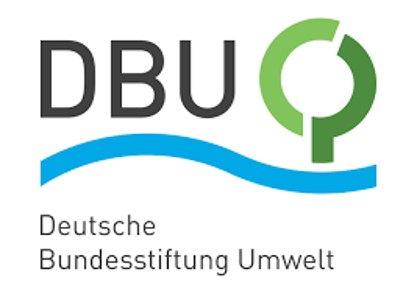
Deutsche Bundesstiftung Umwelt (DBU)
UpCyBar - Barrier technologies for upcycling polyester recyclate films for technical applications
Flexible gas barrier films protect sensitive goods from decomposition due to environmental influences (e.g. oxygen or water vapour) and significantly extend their service life. They therefore contribute to sustainable management in terms of long product life cycles and reduced waste. The encapsulation of sensitive optoelectronic components in particular, such as lightweight and flexible photovoltaic modules, requires minimal oxygen and water vapour permeability combined with flexibility and transparency.
In a project funded by the German Federal Environmental Foundation (DBU), researchers from the Barrier and Precision Coatings research department at the IOM are working with the company Innovative Oberflächentechnologien GmbH (IOT) to develop technologies for refining recycled polyester films. Ultraviolet light is used to convert molecules into solid coatings that give the substrates an improved gas barrier effect. Demonstrators for barrier films based on rPET are produced for various fields of application and evaluated by users.
Duration: 01/2024 – 12/2025
Funding: 245.814,00 Euro
Funding body: Deutsche Bundesstiftung Umwelt (DBU)
Project partner: Innovative Oberflächentechnologien GmbH (IOT)Contact:
Dr. Patrick With
Field of Research "Barrier and Precision Coatings"/ "Photochemically initiated coating technologies"
Phone: +49 (0)341 235-2850
E-Mail: patrick.with(a)iom-leipzig.deDr. Ulrike Helmstedt
Head of the Field of Research "Barrier and Precision Coatings"
Tel.: +49 (0)341 235-3240
E-Mail: ulrike.helmstedt(at)iom-leipzig.de

Europäische Union
CHEOPS-VHP-BB
The global space community is increasingly interested in planetary exploration of the Moon and Mars, near-Earth asteroid avoidance, mining and in-orbit service missions. In the CHEOPS-VHP-BB project, an international consortium consisting of seven partners – leading representatives of the space industry, research centres, universities and SMEs – is developing innovative technologies to enable future Mars, Moon and near-Earth asteroid avoidance missions. The main objective of this project is to design, develop and qualify future propulsion systems and simulation tools for this purpose, thus complementing ongoing development activities with research and development for the future use of very powerful hall thruster propulsion systems. The project takes a robust and cost-effective approach to qualification, the production of key components subject to wear and the possibility of using alternative propellants and energy sources. The cost-effective approach to qualification envisaged in this project requires the modelling of life-limiting wear processes for selected thruster components. In order to correlate wear with thruster operation, a comprehensive characterization of the thrusters in ground tests is required. For this task, the Advanced Electric Propulsion Diagnostic Platform developed at IOM in two previous ESA projects is used. To do this, beam diagnostic tools must first be adapted to the high thermal load under beam exposure from these very powerful Hall thrusters.
Link: www.cheops-vhp-bb.eu
Duration: 2023 – 2025
Funding (whole consortium): 1,499,853.00 Euro
Funding (IOM): 142,333.75 Euro
Funding programme: HORIZON-CL4-2022-SPACE-01
Coordination: Safran Spacecraft Propulsion, FrankreichConsortium partners: 7
Contact:
Dr. Daniel Spemann
Field of research Tools
Phone: +49 (0)341 235-2681
E-Mail: daniel.spemann(a)iom-leipzig.de10ÅCe - 10 Ångstrom CMOS exploration
The objective of the 10ÅCe pThe objective of the 10ÅCe project is to explore and realize solutions for the 10Å CMOS chip technology. The project consortium covers the entire value chain for manufacturing of the CMOS chips in the 10A node, that is, from chip design to lithography to process technology and finally chip metrology. Essential parts of hardware, software and processing technology are developed pushing the boundaries of semiconductor design and manufacture to enable the new node and keep Moore’s law alive.
Link: https://cordis.europa.eu/project/id/101139972
National co-financing of 50% each by the BMBF and SMWA in the joint project "Technologies for 10 Ångstrom lithography in chip production - 10ÅCe" within the European microelectronics funding programme CHIPS.
Link: https://www.elektronikforschung.de/projekte/10ace
Duration: 5/2024 – 4/2027
Funding (total): 98.128.492,75 Euro
H2020 Funding IOM: 999.481,25 Euro
Funding programme: HORIZON.2.4 - Digital, Industry and Space, HORIZON.2.4.2 - Key Digital Technologies
Coordination: ASML NETHERLANDS B.V.Cooperation partner: 30
Contact IOM:
Dr. Frank Frost
Field of Research Ultra-precision Surfaces / Ion beam assisted patterning and smoothing
Phone: 49 (0)341 235-3309
E-Mail: frank.frost(at)iom-leipzig.deIC Technology for the 2 nm Node
IC Technology for the 2 nm Node
Semiconductor research and development continuously focuses on surpassing present state-of-the-art Micro-Chips manufacturing technology to accommodate the exponential increase in demand for more processing power. To increase the number of transistors per chip, the EU-funded IT2 project develops next generation extreme UV lithography and explores novel 3D structures. Much like building an apartment complex rather than a single-family home on the same real estate. The project will enable future chips that will be at the core of AI, Big Data, Mobile/5G communication and other elements of Europe's digitisation. In this way, the project develops knowledge and infrastructure to give Europe’s semiconductor manufacturing equipment industry global leadership in 2nm CMOS technology and supports Europe to obtain a sovereign position in the electronics value-chain.
Link: https://cordis.europa.eu/project/id/875999
Duration: 2020 – 2023
H2020 Funding (total): 91.638.509,26 Euro
H2020 Funding IOM: 990.562,50 Euro
Funding programme: H2020-EU.2.1.1.7. - ECSEL
Coordination: ASML NETHERLANDS B.V.Cooperation partner: 31
Contact IOM:
Dr. Frank Frost
Field of Research Ultra-precision Surfaces / Ion beam assisted patterning and smoothing
Phone: 49 (0)341 235-3309
E-Mail: frank.frost(at)iom-leipzig.deThis project has received funding from the ECSEL (Electronic Components and Systems for European Leadership) Joint Undertaking (JU) under grant agreement No 875999. The JU receives support from the European Union’s Horizon 2020 research and innovation programme and Netherlands, Belgium, Germany, France, Austria, Hungary, United Kingdom, Romania, Israel.
Deutsche Forschungsgemeinschaft (DFG)
DFG Research Group 2177 „Integrierte chemische Mikrolaboratorien (In-CheM)“
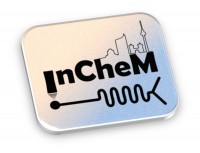
DFG Research Group 2177 „Integrierte chemische Mikrolaboratorien (In-CheM)“
Das Ziel der Forschergruppe „Integrierte chemische Mikrolaboratorien“ ist die Untersuchung von chemischen Prozessen im Mikromaßstab. Das IOM beschäftigt sich insbesondere mit dem Einsatz der Mikrofluidik zur zeitaufgelösten Analyse komplexer katalytischer Reaktionen. Dabei soll die Entwicklung und Validierung von schnellen mikrofluidischen Mischern sowie Freistrahl-Mischer-Reaktoren und Frei-Tröpfchen Mischern in Kombination mit online Analytik durch FT-IR und Fluoreszenspektroskopie sowie zeitaufgelöster Flüssigphasen-Desorptions-Massenspektrometrie erfolgen, um Mechanismen und transiente Zwischenstufen von Mehrkomponentenreaktionen aufzuklären.
For cooperation partners, see also: http://www.in-chem.de/
Contact IOM:
Dr. Christian Elsner
Field of Research Biocompatible and Bioactive Surfaces / Microsystems technology for biomedical applications
Phone: +49 (0)341 235-3183
E-Mail: christian.elsner(at)iom-leipzig.deDFG Priority Programme SPP 1681: Field-driven particle-matrix interactions: Generation, cross-scale modelling and application of magnetic hybrid materials
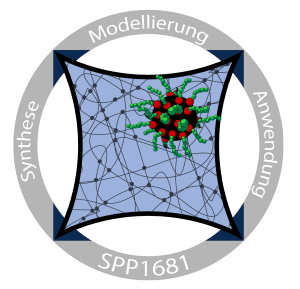
DFG Priority Programme SPP 1681: Field-driven particle-matrix interactions: Generation, cross-scale modelling and application of magnetic hybrid materials
Subproject IOM: Plasma-synthesised magnetic nanoparticles locked in radiation-optimised hydrogels: Optimisation towards a biodegradable medical actuator (PARTACT).
Hybrid hydrogel/magnetic nanoparticle composites are expected to exhibit large reversible shape changes when exposed to appropriate external magnetic fields. Combining properties of soft and hard matter, these new “smart” materials show great promise for a plethora of applications in biomedical sciences, like cell stretching or stimulated tissue regeneration. Within the present project we utilize aspheric inert shell - magnetic core nanoparticles, which are synthesized by pre-seeded inert gas condensation. Employing suitable magnetic fields, they are subsequently dispersed in a gelatin matrix in a way, that the torque on particles in a homogeneous magnetic field ends up in a net deformation of the matrix – once rigidly arrested by radiation induced cross-linking and/or thiolization. Extensive biocompatibility and biodegradation assessments will finally be performed in order to demonstrate the suitability for biological environments.
Coordinator: TU Dresden, 31 Subprojects
https://tu-dresden.de/ing/maschinenwesen/imd/mfd/kooperation/dfg-spp1681Contact IOM:
Prof. Dr. Stefan Mayr
Head of the Field of Research Biocompatible and Bioactive Surfaces
Tel.: +49 (0)341 235-3368
E-Mail: stefan.mayr(at)iom-leipzig.deSFB Transregio 102: Polymers under multiple constraints: restricted and controlled molecular order and mobility
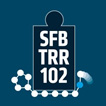
SFB Transregio 102: Polymers under multiple constraints: restricted and controlled molecular order and mobility
Sub-project: “Amyloid protein aggregation and fibril formation near interfaces and nanoparticles“
The molecular mechanisms of amyloid peptide and protein aggregation are still not very well understood. There is growing concern that nanoparticles may catalyze amyloid protein aggregation and thus cause amyloid related diseases. In the previous funding period we have discovered that metal nanoparticles
(external constraint) may accelerate short amyloid peptide aggregation and fibrillation. We have found a nucleation mechanism starting with biomolecule interaction, adsorption, and selforganization in a nanoparticle peptide corona that seeds amyloid peptide/protein aggregation and fibrillation and ends up in large fibrils embedding the nanoparticles. Interestingly, also similar but not exactly matching templates induce fast fibrillation, causing a cross-seeding effect. We specifically aim at (spectroscopic) investigations of the biomolecule corona (structure, composition, dynamics, and function), the cross-seeding effect, as well as answeringthe question, whether catalysis of fibrillation though nanoparticles is indeed a general effect orif also situations exist, in which nanoparticles act as inhibitors. Toxicity studies may help to rationalize the observed effect in vitro. Finally, we aim at developing simple coarse-grained models for the molecularunderstanding of the effect of nanoparticles on the mechanism of aggregation and fibrillation ofamyloid systems.
http://www.natfak2.uni-halle.de/forschung/verbund/sfbtrr102/
Contact:
Prof. Dr. Bernd Abel
Tel.: +49(0)341 235 - 2229
E-Mail: bernd.abel(a)iom-leipzig.de
